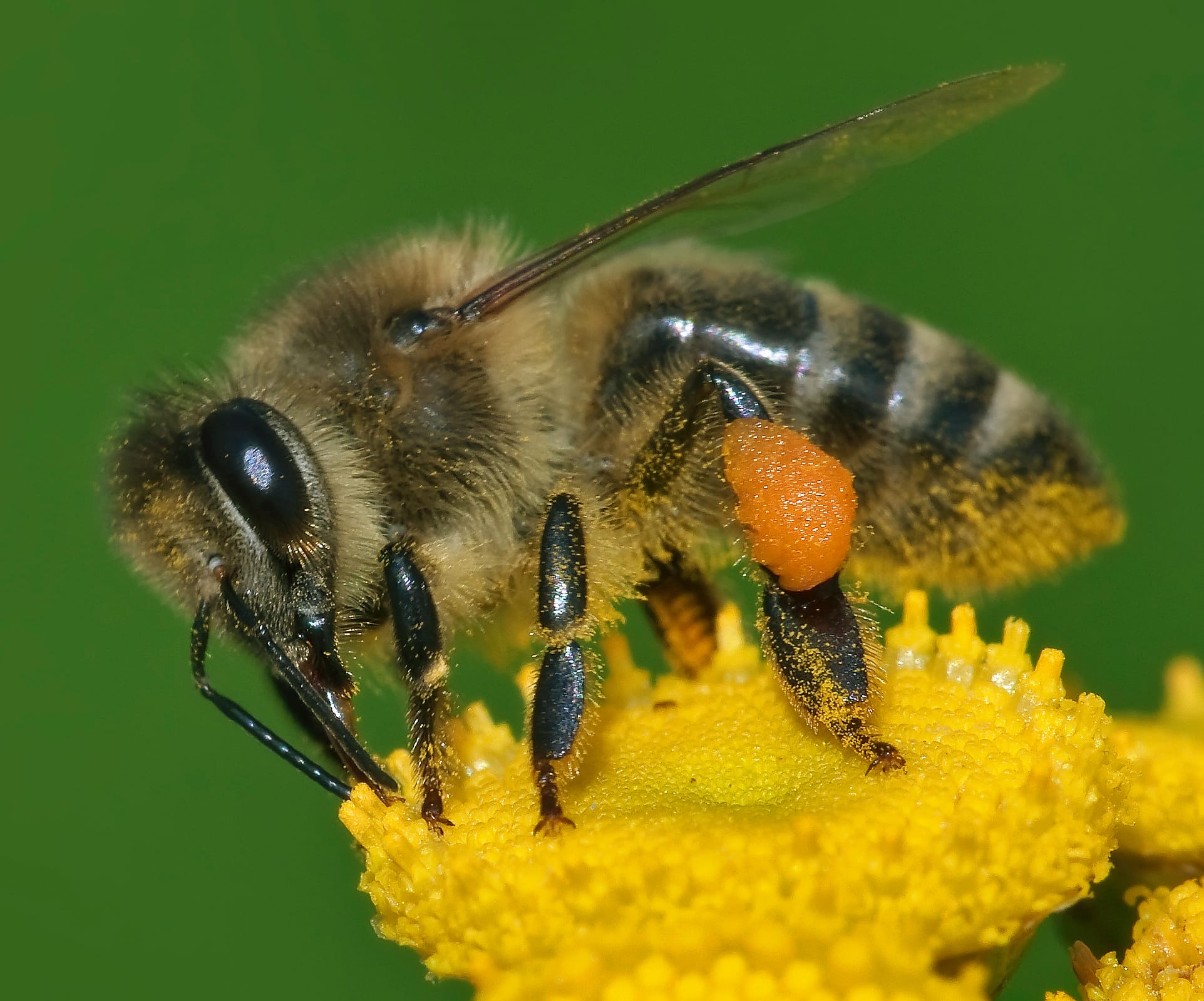The Two Honeyybees: A Tale of Inspiration and Importance
Buckle up for a journey that travels from the bustling world of a honeybee hive to the vibrant realm of social media. We’ll explore the fascinating connection between two “honeyybees” – Honeyybee.bby, a plus-size model inspiring confidence on Instagram, and the remarkable honeybee, a tiny worker with a massive impact on our ecosystem. Get ready to uncover their shared qualities of industriousness, community spirit, and undeniable beauty!
Who is Honeyybee.bby – The Curvy Model Taking Instagram by Storm?
Honeyybee.bby is making waves in the world of fashion and social media. This 23-year-old, based in Dallas, Texas, is more than just a pretty face; she’s a plus-size model on a mission to redefine beauty standards and empower others to love themselves, curves and all.
Her Instagram feed is a breath of fresh air, a vibrant collection of stylish outfits that flatter and empower. She embraces her curves, shattering outdated beauty norms and encouraging others to celebrate their unique shapes. This unwavering dedication to body positivity is what truly sets Honeyybee.bby apart. She’s cultivated a genuine connection with her ever-growing fan base, who see in her a reflection of themselves and a powerful reminder that beauty comes in all sizes.
Decoding Honeyybee.bby: What’s in a Name?
The name “Honeyybee.bby” itself speaks volumes. While the “bby” remains a playful mystery, perhaps hinting at her approachable online persona, the “Honeyybee” is deliberate and impactful.
Honeybees, those busy collaborators, are essential to our ecosystem. They work tirelessly to create something sweet and beneficial – honey! This dedication to community and creating something positive aligns perfectly with Honeyybee.bby’s mission. She, too, is building a supportive online community, encouraging self-love and challenging traditional beauty standards.
Honeyybee.bby’s Impact on Body Positivity
Honeyybee.bby radiates confidence. It’s evident in her online presence, her message of self-acceptance, and her choice of outfits–often pushing boundaries and encouraging others to explore their own style. She embodies the idea that feeling good in your own skin is the most important thing, regardless of shape or size.
Her Instagram is a haven of realness. She’s not afraid to be herself, and this authenticity resonates with her followers. Honeyybee.bby has created a safe space online where people can celebrate their curves, challenge societal norms, and feel empowered to express themselves.
In a world often obsessed with unattainable beauty standards, Honeyybee.bby’s message is a breath of fresh air, reminding us that true beauty lies in embracing our individuality.
Where to Follow Honeyybee.bby Online
Want to add a dose of positivity and style inspiration to your feed? Here’s where to find Honeyybee.bby:
- Instagram: Her main hub is @honeyybee.bby, where she connects with over 250,000 followers, sharing outfits, empowering messages, and glimpses into her life.
- TikTok: For a faster pace, catch her dancing and goofing off on TikTok @honeybeee.bby and @honeyybeebby_.
- Facebook: Join her Facebook community, Honeyybee.bby, to connect with others, chat about body positivity, and get inspired!
No matter your preferred platform, Honeyybee.bby’s message of self-love and acceptance is just a click away!
Honeyybee.bby’s Collaborations and Brand Partnerships
Honeyybee.bby puts her message into action, carefully selecting collaborations that align with her values. She partners with fashion, beauty, and lifestyle brands that champion diversity and celebrate all bodies.
One notable collaboration was with Aerie, a brand known for its body-positive campaigns. Together, they showcased Aerie’s inclusive swimwear line, empowering women to feel confident in their own skin.
Honeyybee.bby’s influence extends beyond traditional advertising. She skillfully integrates brand messages into her content, ensuring authenticity shines through. This genuine approach allows her to introduce her followers to brands she believes in, amplifying her message of self-acceptance.
What is a Honeybee?
Honeybees – those buzzing wonders we often take for granted – are nature’s ultimate multitaskers and essential workers within our ecosystem. They are responsible for pollinating an astonishing one-third of the food we eat!
These fascinating insects live in incredibly organized colonies, with each bee playing a vital role. At the heart of it all is the queen bee, the sole egg-layer and the colony’s matriarch. The worker bees, all female, are the true embodiment of “girl power,” tirelessly performing tasks like collecting nectar and pollen, building honeycombs, caring for the young, and even regulating the hive’s temperature. The drones, male bees, have one primary purpose – to mate with the queen, ensuring the colony’s continuation.
Decoding the Waggle Dance: Unraveling Honeybee Communication
One of the most captivating aspects of honeybees is their remarkable communication system. Forget buzzing–they “speak” through an intricate series of movements known as the waggle dance.
This isn’t just random wiggling! The waggle dance is a highly evolved form of communication. By varying the direction, angle, and duration of their waggles, bees can tell their fellow workers the precise direction and distance to promising food sources.
Imagine a bee returning to the hive after finding a field of flowers bursting with nectar. It performs the waggle dance, conveying the location of this sweet treasure to its hive mates. The other bees, guided by this intricate dance, can then fly directly to the food source, maximizing their foraging efficiency.
The Life Cycle of a Honeybee: From Egg to Industrious Worker
Honeybees undergo a fascinating transformation throughout their lives, passing through distinct developmental stages, each with its own unique purpose.
-
Egg Stage: It all begins with the queen bee, who lays tiny, pearly white eggs within individual honeycomb cells. These cells act as miniature nurseries for the developing bees.
-
Larval Stage: A few days later, the eggs hatch, and out emerge the larvae – small, grub-like creatures with insatiable appetites. Worker bees diligently feed the larvae, their diets influencing their destiny. Future queens receive a special diet of royal jelly – a nutrient-rich secretion – while worker bees and drones are fed a mixture of pollen and honey.
-
Pupal Stage: After a period of intense growth, the larvae enter the pupal stage. Encased within silken cocoons, they undergo a remarkable transformation known as metamorphosis. Within these cocoons, their bodies reorganize, ultimately taking on the adult bee form.
-
Adult Stage: Finally, the pupae emerge as fully formed adult bees, ready to take on their designated roles within the hive. Queens, with their long lifespans, ensure the colony’s growth. Worker bees, the hive’s tireless workforce, dedicate their lives to various tasks. Drones, with their short but crucial lifespans, focus on mating with the queen.
The Importance of Honeybees: Far Beyond the Hive
Honeybees are far more than just producers of honey; they are essential partners in maintaining a healthy and thriving planet. Their pollination services are crucial for the reproduction of countless plant species, including a significant portion of the fruits, vegetables, and nuts that make up our diet.
Without honeybees, our supermarkets would have a very different – and much less appealing – selection! The economic impact of their pollination services is substantial, with estimates in the billions of dollars annually.
Beyond agriculture, honeybees contribute to the biodiversity of our planet, supporting the growth of wild plants that provide food and shelter for other wildlife.
Threats to Honeybee Populations: A Cause for Concern
Despite their vital importance, honeybee populations face numerous threats, many of which stem from human activities. Understanding these threats is crucial if we want to protect these buzzing pollinators and ensure the health of our planet.
-
Habitat Loss: As humans continue to expand urban areas and agricultural land, natural habitats for honeybees are disappearing at an alarming rate.
-
Pesticide Use: Pesticides, while intended to protect crops from pests, can have devastating effects on honeybees. Exposure to these chemicals can weaken bees, impair their navigation abilities, and even lead to death.
-
Climate Change: The changing climate, with its increasingly unpredictable weather patterns, can disrupt the delicate balance between honeybees and the flowering plants they rely on for food.
-
Diseases and Parasites: Honeybees are vulnerable to a variety of diseases and parasites, notably the varroa mite – a tiny but deadly parasite that weakens bees and spreads viruses.
From Hive to Honey: The Sweet Science of Apiculture
Apiculture, the practice of beekeeping, is a fascinating blend of art and science that has been practiced for centuries. Beekeepers play a crucial role in supporting honeybee populations, producing honey, and pollinating crops.
The process of beekeeping involves creating a suitable habitat for bees, typically in hives designed to mimic their natural nesting environments. Beekeepers carefully manage their hives, ensuring the bees have access to food sources, monitoring for pests and diseases, and harvesting honey responsibly.
The honey we enjoy is a testament to the intricate relationship between beekeepers and their bees. It’s a product of countless hours of work, both by the bees themselves and the beekeepers who care for them.
How to Help Honeybees: Every Little Buzz Counts
Protecting honeybees doesn’t require grand gestures – even small actions can have a positive impact. By making conscious choices in our daily lives, we can all contribute to the well-being of these essential pollinators.
-
Plant Bee-Friendly Gardens: Transform your backyard into a haven for pollinators by planting a diversity of flowering plants that bloom throughout the seasons. Native wildflowers are particularly beneficial, providing bees with familiar and nutritious food sources.
-
Reduce Pesticide Use: Opt for natural pest control methods whenever possible. If pesticides are unavoidable, choose those that are less toxic to bees and apply them during times when bees are less active, such as early morning or late evening.
-
Support Local Beekeepers: Purchase honey and other bee products from local beekeepers. By supporting local apiaries, you’re not only getting delicious and high-quality products, but you’re also supporting sustainable beekeeping practices.
-
Educate Others: Spread the word about the importance of honeybees and the threats they face. Encourage friends, family, and community members to take action to protect these essential pollinators.
The Future of “Honeyybee”
Honeyybee.bby, with her message of body positivity and self-acceptance, and the honeybee, with its vital role in our ecosystem, both remind us of the power of embracing our unique qualities, working together, and protecting the natural world.
As we move forward, it’s essential to recognize the interconnectedness of all living things. By supporting honeybee conservation efforts, challenging societal norms, and celebrating diversity in all its forms, we can create a sweeter future for ourselves, our planet, and the generations to come.
Why Should We Care About Honeybees?
Honeybees are far more than just buzzing insects; they are essential partners in maintaining a healthy and thriving planet. Their pollination services are crucial for the reproduction of countless plant species, including a significant portion of the fruits, vegetables, and nuts that make up our diet.
Without honeybees, our supermarkets would have a very different – and much less appealing – selection! The economic impact of their pollination services is substantial, with estimates in the billions of dollars annually.
Beyond agriculture, honeybees contribute to the biodiversity of our planet, supporting the growth of wild plants that provide food and shelter for other wildlife.
How Can We Support Both Honeybees?
The decline of honeybee populations is a serious concern, but there are actions we can take to help them thrive.
-
Create a Bee-Friendly Garden: Transform your outdoor space into a haven for pollinators by planting a variety of flowers that bloom throughout the spring, summer, and fall. Bees are attracted to brightly colored flowers with single petals, as these offer easy access to nectar and pollen. Some excellent choices include sunflowers, lavender, coneflowers, and bee balm.
-
Provide a Water Source: Just like us, bees need water to survive. Place a shallow dish filled with water and some pebbles or stones for the bees to land on. This will allow them to safely access the water without the risk of drowning.
-
Say No to Pesticides: Pesticides and herbicides can be harmful, even fatal, to bees. Opt for natural pest control methods whenever possible. There are many effective alternatives available, such as companion planting, introducing beneficial insects, and using organic pest control products.
-
Support Local Beekeepers: One of the best ways to help honeybees is to support local beekeepers who are committed to sustainable and ethical practices. Purchase honey and other bee products, such as beeswax candles, from local sources. Many beekeepers also offer educational tours and workshops, allowing you to learn more about these fascinating creatures.
Who is Honeyybee.bby?
Honeyybee.bby is a rising star in the world of plus-size modeling and social media. She stands out not just for her beauty, but also for her unwavering advocacy for body positivity and self-love.
She encourages her followers to embrace their bodies, challenge conventional beauty standards, and find strength in their individuality. Her message is one of inclusivity and empowerment, reminding everyone that true beauty comes in all shapes and sizes.
What is a Honeybee and Why Are They Important?
Honeybees play a vital role in our ecosystem as pollinators. As they collect nectar from flowers, they also transfer pollen, enabling plants to reproduce. This process is essential for the production of many fruits, vegetables, and nuts that we rely on for food.
Honeybees have a fascinating social structure, living in colonies with a queen bee, worker bees, and drones. The queen bee is responsible for laying eggs, while the worker bees perform various tasks, such as collecting nectar, building the hive, and caring for the young. The drones’ primary role is to mate with the queen.
Unfortunately, honeybee populations are declining due to various factors, including habitat loss, pesticide use, and climate change. This decline has serious implications for our food security and the health of our ecosystems.
Connecting the Two: From Honeycomb to Social Media
At first glance, a plus-size model and a honeybee may seem like an unlikely pairing. However, upon closer examination, we can see a strong connection between Honeyybee.bby and these industrious insects. Both embody resilience, dedication, and a commitment to something bigger than themselves.
Honeyybee.bby’s message of self-acceptance resonates with the honeybee’s strong sense of community and purpose. Just as honeybees work together for the greater good of the hive, Honeyybee.bby is building a community where everyone feels seen, valued, and empowered to be themselves.
It’s a reminder that even small actions can have a big impact. By embracing our own unique qualities and working together, we can create a more inclusive and sustainable world for all.
- Unveiling Bernhard Caesar Einstein’s Scientific Achievements: A Legacy in Engineering - July 15, 2025
- Uncover who is Jerry McSorley: CEO, Family Man, Business Success Story - July 15, 2025
- Discover Bernhard Caesar Einstein’s Scientific Contributions: Unveiling a Legacy Beyond Einstein - July 15, 2025















